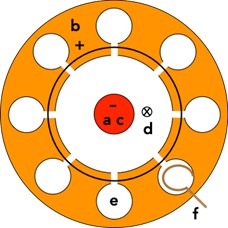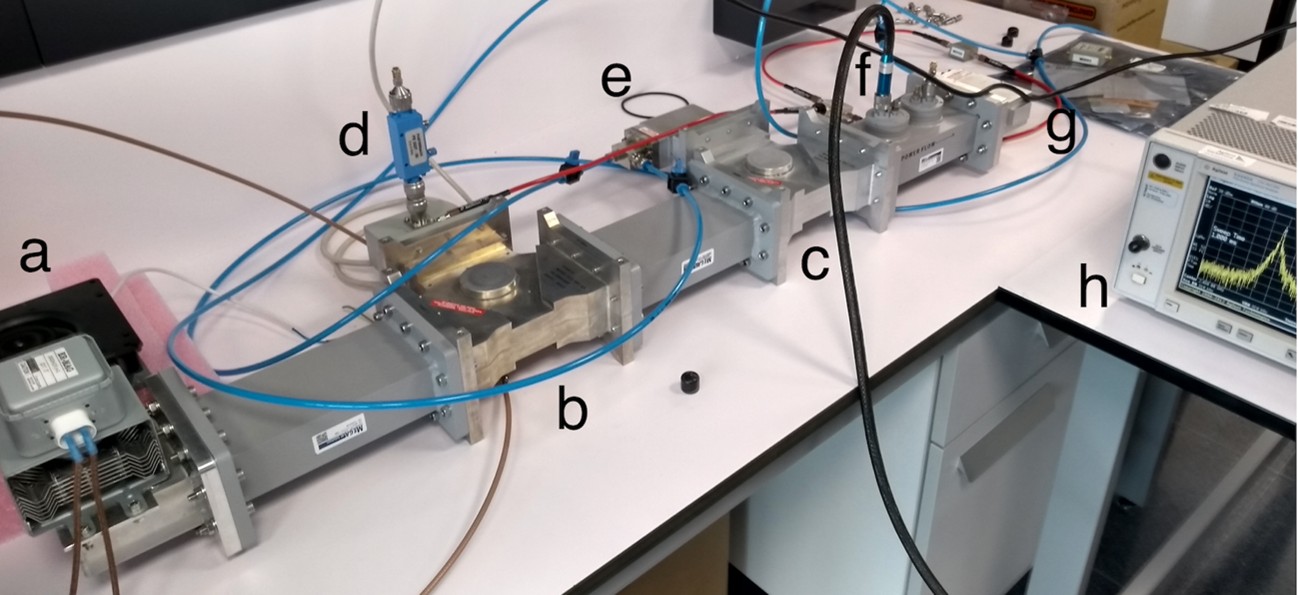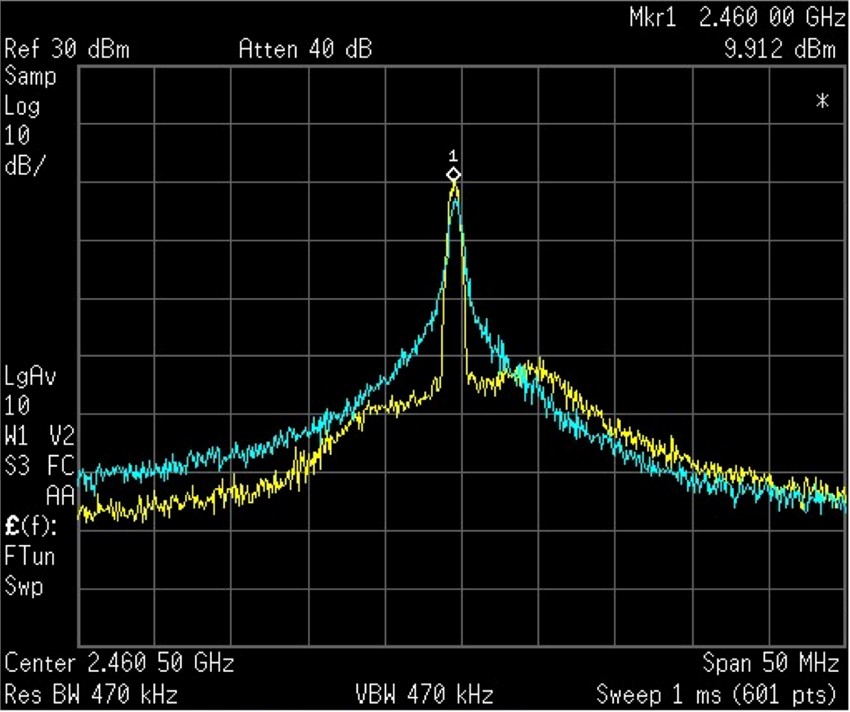Magnetrons: high-efficiency power microwave sources for a new generation of particle accelerators
Author: Victor Etxebarria, professor, Dept. Electricidad y Electrónica. Fac. Ciencia y Tecnología, Universidad del País Vasco-UPV/EHU
Magnetrons are high-power vacuum tubes conceived more than a century ago to produce microwaves. Their working principle involves the interaction of a cloud of electrons jumping from the cathode to the anode of the device together with a magnetic field. This spinning electron cloud trajectory induces electromagnetic fields in several resonant cavities at a certain main frequency.
John Randall and Harry Boot at the University of Birmingham in 1940 produced hundreds of watts at 10 cm wavelength with their efficient magnetron. Thanks to their device, new practical radar systems appeared to detect war aircrafts and by the end of World War II, almost every radar was based on the magnetron.
Although the magnetron produces efficiently high-power microwaves, it is not a radio frequency (RF) amplifier, but a rather complex self-exciting power oscillator, whose behavior is not easily controllable. For these reasons in the 1960s the magnetrons were replaced by other true radio frequency amplifiers such as tetrodes, klystrons or inductive output tubes (IOTs), much less efficient, but much easier to control.
RF power sources are expensive components that are essential to RF accelerators, from their ion generators to their RF resonators to energize beam acceleration. These sources must be amplified and controlled to achieve a sufficient frequency and phase stability. Tube and solid-state RF amplifiers have been used, but magnetrons have not been found to be suitable in the past because of their difficult control and stabilization.
However, magnetrons have recently been considered a serious alternative to RF power sources for new accelerators. In particular, the injection phase-lock technique for resonant cavities has been demonstrated in industrial particle accelerators, but no general theoretical nonlinear control techniques have been introduced for magnetron devices yet. The IZPILab Beam Laboratory from UPV/EHU has developed a novel nonlinear approach to magnetron control including general input-state feedback linearization techniques capable of stabilizing the complex nonlinear dynamics appearing in these devices 1. Robust stabilization of these devices using the proposed differential geometry control technique may extend the magnetron use in important research and industrial fields requiring stable RF power sources.
The nonlinear dynamics of magnetrons are quite complex, because they include many key components working together, such as the filament, anode, cathode, magnet, resonant cavities, and RF antenna to extract microwaves as shown in Figure 1. In terms of modelling such a device, but looking for simplification as much as possible, we need to include its main elements if we want to improve and control its performance not only for common industrial heating but also for more demanding applications such as particle accelerators.

By means of our nonlinear model we can explain most of the experimental effects measured in ordinary magnetrons, as well as to try to control their performance. In the proposed state-model of the magnetron, the capacitance between the anode and cathode, as well as the inductance, capacitance and equivalent resistance, of the resonant cavities are included. A third order nonlinear system explaining how the magnetron works as a nonlinear self-oscillating device without control is obtained. These oscillations may be unstable, noisy and even chaotic. To fix this inconvenience, we introduce here a practical input-state feedback linearization control scheme, which requires a control input variable in the complete system, whose robust stabilization is proved using differential geometry control theory as well as both in simulation and laboratory experiments.

A photograph of the experimental setup in the IZPILab-Beam Laboratory of the UPV/EHU is shown in Figure 2. Open loop magnetrons are operated through two power sources to energize the anode, cathode and filament. As described above, to stabilize the magnetron response, we injected the control signal into the resonators.

Figure 3 shows the frequency spectra measured in the laboratory experiments. The magnetron without control provides a decent microwave signal around its main frequency (spectrum shown in blue) but the response under closed-loop control displays a significant improvement over a 10 MHz offset around this frequency (results plotted in yellow). The corresponding phase noise measurements have shown a remarkable 30 dBc/Hz improvement in our experiments.
Amplitude and phase noise, some of the most undesirable characteristics in power signals for particle accelerators, have clearly been improved now in the laboratory. These experimental results allow us to consider magnetrons as a serious alternative of robust source of power radio-frequency and microwave signals for particle accelerators, instead of expensive and inefficient klystrons, tetrodes, IOTs or power solid-state amplifiers. Magnetrons have not been used before in this context, because they have not been suitable for real control of amplitude, frequency and phase signals, which we can now clearly consider for the new generation of compact, affordable and efficient particle accelerators.
References
- Victor Etxebarria, Joaquín Portilla and Jorge Feuchtwanger (2025) Input-state feedback linearization for stable radio-frequency magnetron control. Systems Science & Control Engineering doi:10.1080/21642583.2025.2486132 ↩